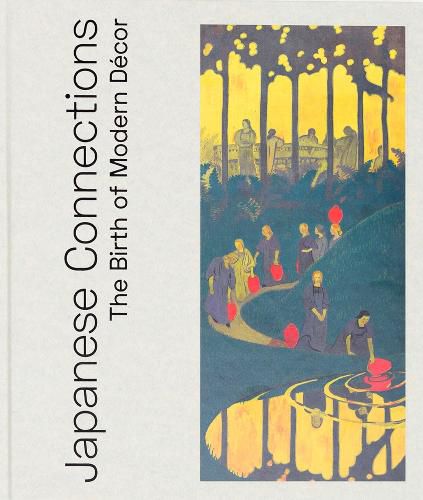Readings Newsletter
Become a Readings Member to make your shopping experience even easier.
Sign in or sign up for free!
You’re not far away from qualifying for FREE standard shipping within Australia
You’ve qualified for FREE standard shipping within Australia
The cart is loading…






How the 19th-century fashion for Japonisme transformed European art and culture
Starting in the 1860s, a partiality for Japanese culture emerged in France, followed by England, which was to continue for almost 50 years. Giving rise to the fashion for Japonisme, it followed on from the taste for chinoiserie that was in vogue in the courts of Europe at the end of the 18th century, and that had fascinated several generations of Romantic artists during the first half of the 19th century. Most of the innovative artists collected these prints and were influenced by the themes specific to ukiyo-e, such as the seasons and climatic conditions. Hokusai, Hiroshige and Utamaro, woodblock print artists who were little thought of in Japan due to the lightness of their works, were considered masters in France. Their influence, combined with that of photography and scientific discoveries relating to matter, had a profound effect on how the world and academic certainties based on unchanging principles were viewed. The aesthetic revolution initiated by the Impressionists was pursued by artists such as Van Gogh and Gauguin, who both succumbed to the appeal of Japonisme and took up the formal simplification and bright colors of woodblock prints. The artistic exploration of such artists was to lead to the overturning of visual representation, of which the Nabis were direct heirs.
$9.00 standard shipping within Australia
FREE standard shipping within Australia for orders over $100.00
Express & International shipping calculated at checkout
Stock availability can be subject to change without notice. We recommend calling the shop or contacting our online team to check availability of low stock items. Please see our Shopping Online page for more details.
How the 19th-century fashion for Japonisme transformed European art and culture
Starting in the 1860s, a partiality for Japanese culture emerged in France, followed by England, which was to continue for almost 50 years. Giving rise to the fashion for Japonisme, it followed on from the taste for chinoiserie that was in vogue in the courts of Europe at the end of the 18th century, and that had fascinated several generations of Romantic artists during the first half of the 19th century. Most of the innovative artists collected these prints and were influenced by the themes specific to ukiyo-e, such as the seasons and climatic conditions. Hokusai, Hiroshige and Utamaro, woodblock print artists who were little thought of in Japan due to the lightness of their works, were considered masters in France. Their influence, combined with that of photography and scientific discoveries relating to matter, had a profound effect on how the world and academic certainties based on unchanging principles were viewed. The aesthetic revolution initiated by the Impressionists was pursued by artists such as Van Gogh and Gauguin, who both succumbed to the appeal of Japonisme and took up the formal simplification and bright colors of woodblock prints. The artistic exploration of such artists was to lead to the overturning of visual representation, of which the Nabis were direct heirs.